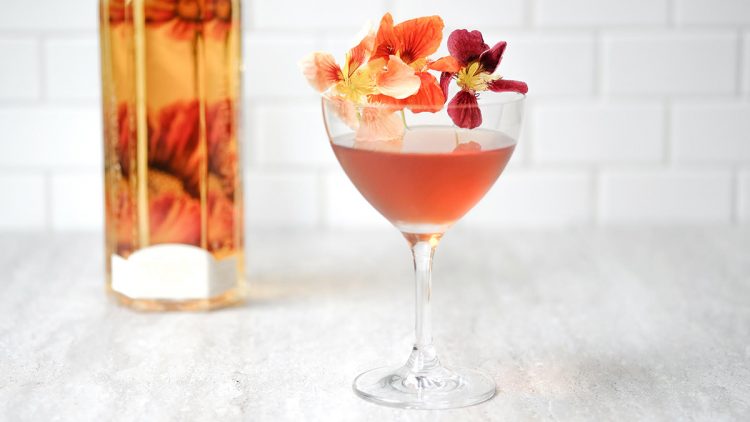There’s no doubt that aromatics play a role in any culinary experience — including imbibing. Using fresh flowers is not only a way to amplify the senses, but they can make an easy and stunning garnish on a homemade cocktail or mocktail.
However, it’s not as easy as going to the florist or heading to your garden in the yard for a few flowers to use. Flavor combinations within a mixed drink need to be complemented by a chosen floral garnish, and ensuring the flower you want to use is actually edible (and delicious!) can be intimidating.
“Never consume anything without verifying it’s edible. With flowers, you can buy an edible flower field guide or look them up online. That being said, some flowers are edible but simply don’t taste good,” says Lee Noble, cocktail director of Philadelphia, PA-based Art In The Age, a tasting room and home bar supply shop.
Noble says that a flower like a pansy is mildly vegetal so it goes well in a salad but doesn’t do much in a cocktail, for example. But by tapping into other appetizing flavor notes that can often be found in a field guide — like, bittersweet, tart, sweet, spicy — the chances your floral of choice will taste good in a drink is heightened. However, steeping, cooking or infusing may change the taste of the flower so Noble says to be aware of that and be open-minded.
“If it amps up your drinks by adding that one missing layer of flavor, and you’re happy with the results, it’s a big win,” he says.
Just like not every floral is created equal, not every spirit is created equal and you’ll want to find a flower that act as an enhancer to the beverage. Noble says that if you’re making a gin-based drink, opt for delicate perfume-based flowers like elderflower, lavender and chamomile. For rum, cachaça, tequila and mezcal, he suggests going a bit exotic with flowers as they reflect their native environments — hibiscus, jasmine and orchids. For bourbons and whiskies, though, Noble notes that there are a lot of different options one can choose.
“I like to use temperate climate wildflowers like clover, heather, dandelion, or blossoms from the herb and vegetable garden, like arugula blossoms, mint blossoms, fennel blossoms, or even basil,” he says.
And if you’re feeling floral but aren’t quite ready to dabble in creating your own infusion, Noble notes that choosing a floral-infused spirit — like Tamworth Garden Gin — can tackle that craving. But, says Noble, there is always more room to experiment and amp up the flavor even more.
“If you want to add a rosy accent, or bit of orange blossom, for example, start with a small amount, taste the resulting infusion, remove the spent flowers, and then add a new measure of flowers to increase the flavor as needed. It’s similar to adding seasoning ‘to taste’ in cooking, but a bit more involved,” he explains.

